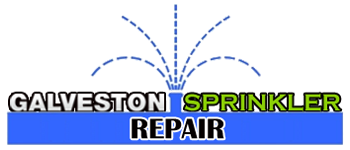4 Common Galveston Sprinkler System Problems
A healthy, green lawn is a point of pride for any Galveston homeowner. Your automatic sprinkler system is the unsung hero, and when it works well, it keeps your landscape lush and inviting. But when problems arise, an inefficient or broken system can quickly lead to brown patches, water waste, and high utility bills. That’s why it’s important to understand common sprinkler issues and know when to call in trusted experts like Galveston Sprinkler Repair. With their reliable service, you can spot trouble early and ensure that any problem is handled efficiently and professionally.
This guide will walk you through four frequent sprinkler system problems found in the Galveston area. We’ll show you how to identify these issues and outline steps you can take to keep your system running smoothly. And when repairs go beyond a quick fix, remember that Galveston Sprinkler Repair is ready to help restore your irrigation system to peak condition.
1. Zone Failures: When a Section Won’t Spray
One of the most frustrating issues is when an entire section, or “zone,” of your sprinkler system fails to turn on. You might notice one part of your yard is dry and struggling while the others are thriving. This problem usually points to an electrical or hydraulic issue preventing water from reaching the sprinklers in that specific zone.
Identifying the Cause
A zone failure is typically caused by one of three things: a faulty solenoid, a bad valve, or wiring problems.
- Faulty Solenoid: The solenoid is a small electrical component on each zone valve that receives a signal from your controller. When it gets the signal, it opens the valve to let water flow. If the solenoid is burned out, it can’t open the valve.
- Bad Diaphragm or Valve: Inside each valve is a rubber diaphragm that seals it shut. Over time, this diaphragm can become worn, torn, or clogged with debris, preventing the valve from opening or closing properly.
- Wiring Issues: The wires running from your controller to each valve can get damaged by shovels, lawn equipment, or even burrowing animals. A cut or disconnected wire means the electrical signal never reaches the solenoid.
What to Do
Troubleshooting zone failures can be complex. You can start by checking your controller to ensure it’s programmed correctly for that zone. If the programming looks right, the issue likely lies with the valve or its wiring. Finding and repairing a buried wire or rebuilding a valve often requires specialized tools and knowledge. If a quick check of the controller doesn’t solve it, it’s best to contact a professional to diagnose the electrical or mechanical failure accurately.
2. Backflow Preventer Problems
Your backflow preventer is a critical safety device connected to your main water line. Its job is to ensure that water from your irrigation system never flows backward into your home’s clean water supply. This prevents contamination from fertilizers, pesticides, and bacteria from the soil. In Galveston, as in the rest of Texas, a functioning backflow preventer is required by law.
Signs of a Malfunctioning Backflow Preventer
A failing backflow preventer can be a serious health hazard and may also cause operational problems with your sprinklers.
- Constant Leaking or Dripping: If you notice water consistently leaking from the device, it could indicate worn-out seals or internal components.
- Discolored Drinking Water: This is a major red flag. If your tap water appears brown or yellow, shut off your sprinkler system immediately and call a plumber and an irrigation specialist.
- Sudden Drop in Water Pressure: A malfunctioning backflow preventer can sometimes restrict water flow, leading to a noticeable drop in pressure across your entire sprinkler system.
Addressing the Issue
Backflow preventer repair and testing are not DIY jobs. They require a licensed technician with specific certification. Annual testing is often mandated to ensure the device is working correctly and protecting your family’s water supply. If you suspect an issue, your first step should be to call a certified Galveston sprinkler repair service that is licensed to work on backflow devices.
3. Improper Sprinkler Head Height
For your lawn to get even water coverage, every sprinkler head needs to be at the right height. It should sit just high enough to pop up over the grass but not so high that it becomes a tripping hazard or gets damaged by a lawnmower.
Spotting Height Problems
Walk your property while the sprinklers are off to inspect the heads.
- Heads Are Too Low: Over time, soil and thatch can build up, causing sprinkler heads to sink. When a head is too low, its spray is blocked by the surrounding grass, creating dry, brown circles around the sprinkler.
- Heads Are Too High: Soil erosion or improper installation can leave sprinkler heads sticking up too far. This makes them vulnerable to damage from foot traffic and lawn equipment. The exposed riser (the pipe below the head) can also be damaged by UV rays, becoming brittle and prone to breaking.
How to Fix It
Adjusting sprinkler head height is a manageable task for a handy homeowner. If a head is too low, you can carefully dig around it and add a small riser extension to raise it to the proper level. If it’s too high, you may need to remove some soil from underneath it or replace the existing riser with a shorter one. However, be careful not to damage the underground pipes. If you’re not comfortable digging around your irrigation lines, a professional can quickly and safely make the adjustments for you.
4. Noisy Sprinkler Heads
Your sprinklers should operate with a relatively quiet spray. Loud noises like chattering, screeching, or banging are signs that something is wrong. Ignoring these sounds can lead to more significant damage down the line.
What’s That Noise?
Different noises can point to different problems.
- Chattering or Grinding: This often indicates high water pressure. The water is moving through the head so fast that it causes the internal components to vibrate violently. This can wear out the head quickly. A chattering noise can also be caused by a broken head or a blocked nozzle.
- High-Pitched Whining or Screeching: This is another common symptom of excessive water pressure forcing its way through a small opening. It could also mean a valve is not opening fully.
- Thumping or Banging: Known as “water hammer,” this sound occurs when a valve closes too quickly, sending a shockwave through the pipes.
Silencing the System
First, inspect the noisy head for visible damage or debris clogging the nozzle. Sometimes, simply cleaning the filter screen or nozzle can solve the problem. If the noise persists, the issue may be high water pressure. A pressure regulator can be installed at the main valve to protect the entire system. Addressing water hammer often involves installing a water hammer arrestor or having a professional inspect the zone valves.
Keep Your Galveston Lawn Green and Healthy
A well-maintained sprinkler system is key to preserving your landscape and conserving water. By learning to spot common issues like zone failures, backflow malfunctions, improper head height, and noisy operation, you can take action before minor problems become costly disasters.
While some fixes are simple, many sprinkler repairs involve complex electrical and plumbing work. For reliable and safe repairs, it’s always best to trust the experts. If your irrigation system is acting up, don’t wait for your lawn to suffer.
Contact a professional Galveston sprinkler repair service today to schedule an inspection and ensure your system runs efficiently all year long.

